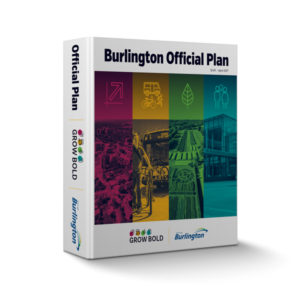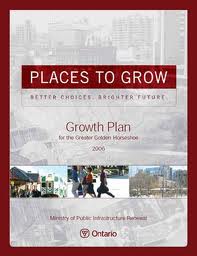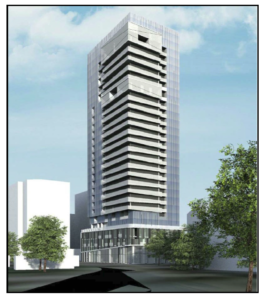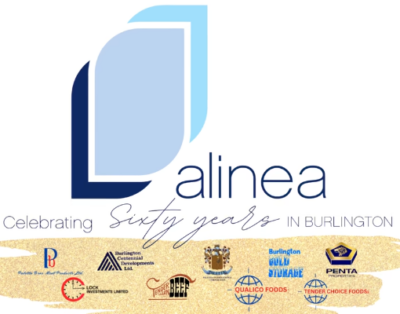 By David McKay
By David McKay
April 25th, 2018
BURLINGTON, ON
David McKay taught science to many of the people who help run the city. Now retired from classrooms – he appeared before city council to put some of the city’s history in perspective.
I appreciate you taking yet another round of delegations on this matter. My comments will be
made from the perspective of someone who has been involved as a citizen with planning issues
in Burlington for some fifteen years, as a member of city advisory committees, community groups and as an individual. I have followed and on occasion participated in the development of this plan for seven years as it followed a windy and sometimes unpredictable road.
One cannot of course, comment on the entire plan, and I shall confine my remarks to three aspects:
 First, I must commend council and staff for realizing and accepting that so much had happened and was happening since the completion of the previous plan that amendments alone would not suffice, and for having the courage and commitment to build an entirely new plan.
First, I must commend council and staff for realizing and accepting that so much had happened and was happening since the completion of the previous plan that amendments alone would not suffice, and for having the courage and commitment to build an entirely new plan.
The process of developing this ambitious document included an extensive amount of citizen
engagement with numerous public meetings on various aspects of the plan and finally on the
document as a whole; with frequent opportunities to appear before committee or council.
While some of these events were not entirely amicable, there was opportunity to comment
or suggest and these meetings did result in alterations to the final plan. The amount of time
given to the engagement process and numerous revisions and rewrites of parts of the plan
were much greater that had occurred during the development of previous plans.
Secondly I would comment on a specific part of the new plan which is indicative of a realization that our City is big enough and varied enough that different areas need different treatment in a City Wide Planning Document. My community was involved in the “Neighbourhood Character Study” which resulted in specific planning requirements and control by-laws for particular communities with a particular history and particular needs. This was achieved through an extensive consultative process between city staff , neighbourhood associations, outside consultants and individual residents. The process was lengthy, challenging, and at times frustrating but in the end it brought positive results for all parties involved. There are other areas of the plan which reflect this type of community based planning.
Finally I wish to give “my take” on a portion of the plan which has been the focus of much of the recent discussions – The Downtown Transportation Hub. To fully evaluate this part of the Official Plan it is necessary to know and understand how we got to where we are at present.
It began, really, with the Provincial Greenbelt Plan, developed in the middle of the previous decade by a Group headed by our then mayor, Rob McIsaac. This plan, while needed and beneficial in its curbing of urban sprawl, had a profound and immediate effect on our City as virtually all of its undeveloped land (about 50% of our area) became part of the Greenbelt or the Niagara Escarpment Lands and Alton became our last subdivision.

Then of course came “Places to Grow” – a detailed outlining of where the millions of new residents of the “Greater Golden Horseshoe” were to be accommodated over the next 20 years. Municipalities were not given any say in this allotment, and Burlington received its quota of new residents to be accommodated; and this would be need to be through “infill”.
In addition, the municipality had to establish a “designated growth area” where the number of jobs and residents per hectare would be the highest. Burlington chose to designate its downtown as this growth area. Here, Mr. Chair, is exhibit A from an event held almost 10 years ago. The Mayor’s Downtown Summit was a daylong event that brought together council, staff, invited speakers and interested citizens to talk about how the requirements of the designated area could be met within a downtown area of limited size, surrounded on three sides by residential communities. One conclusion at least was clear – growth would be vertical, not horizontal as is true in the core of any City. The questions were how high and how often.
The implementation of Places to Grow went relatively smoothly for some years – high rise buildings were erected on the north side of Lakeshore, with one now being built on the south. Existing high rises on Elgin and Ontario were joined by the Strata on Maple and another high rise on Brock and the Berkeley on John St. is now well underway. In the main the heights of these buildings were peacefully negotiated and put the city well on the way meeting its targets.
Two recent events have created challenges for the City and suddenly made citizens aware of just how much growth others would like to thrust upon us. First the direct appeal to the OMB of the proposed building at Martha and Lakeshore where a height far beyond that planned by the city was requested; and to the astonishment and dismay of almost all of us it was granted. Clearly the OMB continues to worship at the Altar of the Provincial Policy statement, whose  mantra is “Intensification above all”. Second, the deadline for OMB referrals to be heard under the ‘old’ system brought forward a raft of applications by companies, some of whom did not have a clear idea of just what they were going to do, but didn’t want to deal with the new system. Visualizing all that infill in an around our core is quite unsettling.
mantra is “Intensification above all”. Second, the deadline for OMB referrals to be heard under the ‘old’ system brought forward a raft of applications by companies, some of whom did not have a clear idea of just what they were going to do, but didn’t want to deal with the new system. Visualizing all that infill in an around our core is quite unsettling.
So what to do? Certainly the growth that has taken place and will take place in the core is significant and will change the tenor and tone of our downtown streetscape. We do not need all the proposed structures to meet the Places to Grow requirements; indeed there are not enough prospective downtown condominium owners to fill them all if they were to be built.
Burlington did not ask for the Federal Government to add four million immigrants to the Greater Golden Horseshoe area; Burlington did not ask for growth quotas: Burlington did not ask for an unending supply of developers with deep pockets who all think that they can make a good profit out from yet another condo tower; Burlington did not ask for an outside arbitrator who seems wedded to intensification regardless….But that’s what we got.
We are seven years into formulation of this plan and have included as much input from as many people as possible. There are no clear alternatives to its proposed directions. It is time to approve it and get on with the business of doing as much as we can to make it work .


















Difficult to agree with many statements in this delegation, as noted by comments above, in addition, this statement “My community was involved in the ‘Neighbourhood Character Study’ which resulted in specific planning requirements and control by-laws for particular communities with a particular history and particular needs”. This puts a completely different perspective on this delegation, which many might say rings of NIMBYism – i.e., my community is protected, so the growth has to go somewhere else. And since the value of my property is protected, I’ll be able to afford the retirement condo downtown that I’m looking forward to buying. All good for Roseland residents, but maybe not for the rest of Burlington’s residents, now and in future.
And this statement just sounds like straight mockery: “Finally I wish to give “my take” on a portion of the plan which has been the focus of much of the recent discussions – The Downtown Transportation Hub.”
Sound familiar?
It all boils down to the left’s hatred of the car and love for mass transit. Create overcrowded cities and ignore the roads hoping that the people will get out of their bourgeois cars and onto busses and trains.
https://www.greenlivingonline.com/article/greenbelt-sprawl-no-more
While you make some good points David, I take issue with three things contained in your commentary.
“…there was opportunity to comment or suggest and these meetings did result in alterations to the final plan. The amount of time given to the engagement process and numerous revisions and rewrites of parts of the plan
were much greater that had occurred during the development of previous plans.”
I submit there is a serious qualitative difference between having an opportunity to comment and make suggestions versus actually taking those suggestions to heart and acting upon them. I attended well over 20 meetings last year dealing with the OP and the Mobility Hubs. What struck me about the consultation process was that it was perfunctory and superficial at best. At one downtown mobility hub meeting residents at 9 of 12 tables provided essentially the same comments regarding height and downtown high rise concentration, but it was not acted upon in the final recommendations. At an Appleby Hub meeting two audience members asked questions regarding infrastructure and transportation, and were effectively ignored. Not what I would call an effective consultation process.
“There are no clear alternatives to its proposed directions.”
Well, in fact there are alternatives….and that is precisely what so many commentators on this website have been saying for months. Council could: 1) put the decision to a plebiscite and let the voters decide; 2) present a different vision; 3) extend the timeline; 4) call in an outside consultant and mediate the differences and find a compromise solution. Let’s also remember, as you have alluded to, that this has been mandated by the provincial government. I would suggest that Kathleen Wynne’s government is very much on life support. The Liberals likely won’t survive, and many of their initiatives introduced in the past 15 years likely won’t either.
“It is time to approve it and get on with the business of doing as much as we can to make it work”.
Well, some of us would suggest otherwise. I would respectfully submit that when so many writers and commentators find fault, failings and shortcomings with these plans that the prudent thing would actually be to stop, critically re-examine what is being said, and re-focus. The fact that Council is fixated on approving the OP without critically examining the content and viability of criticisms begs two obvious questions: 1) what is the hurry? and 2) what are they hiding?
Here’s the final sad truth. The Mayor and Council thought this OP consultation process was going to be a “slam dunk”. It has turned into a circus. They are facing the biggest public backlash in recent memory, and an election is looming. The consultation process has completely unravelled, and City Hall doesn’t know how to get a grip on it and control the agenda. Many recent actions at City Hall (e.g. threats of lawsuits against ECoB and the Burlington Gazette; recycled communications promoting Grow Bold; moving the former Director of Planning into a Deputy City Manager role and hiring a new Director of Planning; etc.) are actions of people who have or are losing control. For voters however, the municipal election provides Burlington residents with an opportunity to hit the re-set button and fix both by replacing the very people who effectively designed it and supported it.
How refreshing to read a logical and well thought through article. Well done.
Gary: Adding to your comment as to future growth, we also must not forget
– the Uptown Urban Growth Centre on Appleby Line and Upper-Middle,
– the Intensification Corridor associated with much of Plains Rd & Fairview St.
– the Intensification Nodes associated with the 50+ plaza sites
Ref OP Schedule B-1 entitled Growth Framework.
Thanks for the further information on intensification sites Jeremy.
Regarding the statement, ” Burlington did not ask for the Federal Government to add four million immigrants to the Greater Golden Horseshoe area”. During the January 29 2018 council meeting a councilor also attempted to use the same argument to justify the OP by stating, “ The federal government is letting in 300,00 new immigrants and half of them are coming to southern Ontario”.
The the use of immigration to make a case for our OP is tenuous at best. Immigration is not news, according to stats Canada our normal immigration since the 90’s has been in the order of 235,000 per year and the Canadian immigration plan sees that going to as high as 340,000 by 2020. Compare that to the fact that in 1913, 400,000 immigrants came to Canada at a time when our population was a mere 7 million.
So, what we are looking at as a country is an additional 65,000 more people per year who will disperse across the country, about 50% will settle in Ontario, and some will choose to come to our city.
Having said that, real Population Growth is something our country needs, and immigration is one component of Population Growth. The formula for PG = (natural increase=births-deaths) + (migratory increase=immigration-emigration). So, while the mathematics of population growth is simple, the dynamics behind the drivers of demographic changes and where people settle are more complex.
If we are going to use immigration as part of our case to intensify we cannot ignore the fact immigrants disperse across Canada and historically half of them have settled in Ontario. So, in terms of immigration there is no new news and we need to know more about the use of net migration for making decisions.
What we have been experiencing and will continue to experience here in
Burlington in the near term, is the migration of people from locales that have higher priced real estate. That phenomenon is about to end as real estate prices here have spiked and are becoming untenable and people are moving on and are seeking lower priced real estate in Hamilton while it exists. So please, let’s not use the immigration argument to justify this OP.
Thank you Mr. McKay for great history. Question to one of your paragraphs is: in the establishing of a “designated growth area” (10 years ago), and the downtown being the chosen location, how do/did you come to the decision that the number of JOBS and residents PER HECTARE would be the highest for this area? Wth only an “anchor” mobility hub, no possible chance of road expansion, and 17 or more skyscrapers to be erected, where do the JOBS and RESIDENTS PER HECTARE factor in for the downtown chosen “growth location”? The space as I see it going forward for the downtown is allocated with majority residential. Perhaps I need some explanation. Thank you.
With all due respect to David, I suggest that the history should be slightly changed to “the Province chose to designate Burlington’s downtown as this growth area”. It did this for nearly all municipalities in the growth area of southern Ontario. Burlington did not choose the growth area. It accepted the Province’s choice.
All of the future growth to 2031 in Burlington was never anticipated to be in the downtown. Much of it was to be assigned to the Burlington GO Station Mobility Hub designated soon after by Metrolinx. The City then added its own Mobility Hubs at Aldershot and Appleby GO Stations as further future growth areas.
So if get this delegation correctly, my neighbourhood is protected from intensification because of what we advocated for through the neighbourhood character study, but the downtown residents should shut up, accept they have no recourse, and live with it – no matter how egregious its consequences.
“Burlington did not ask for the Federal Government to add four million immigrants to the Greater Golden Horseshoe area; Burlington did not ask for growth quotas: Burlington did not ask for an unending supply of developers with deep pockets who all think that they can make a good profit out from yet another condo tower; Burlington did not ask for an outside arbitrator who seems wedded to intensification regardless….But that’s what we got.”
I didn’t ask Burlington to progress with absolutely no transit plan what so ever that can work. I didn’t ask them to proceed with deterioration parking standards, road standards and greenspace standards. I didn’t ask them to produce 4 mobility hubs that we have totally lost control of. I didn’t ask for 23 story buildings – I’m sure you are aware Paris has 200 people per Hectare with 6 story buildings.
Yes the province makes the system, and we need to push back on some areas of it, but the city has accelerated intensification way beyond the provincial requirement. The official plan shows council and staff are wedded to the model of the high-density nightmare city as well.